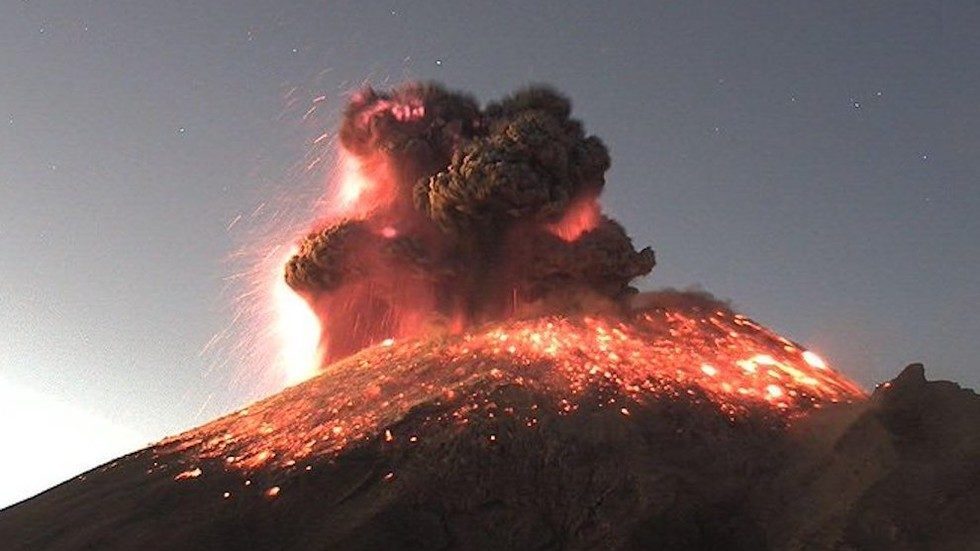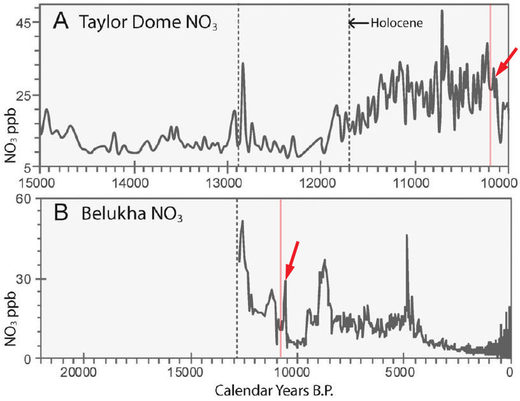Here is a short list I wrote down a while ago in order to pay closer attention to information in and around those dates that might pop up in the scientific literature in terms of cataclysmic events and such. It is the 3600 years comet-cluster-cycle the C's suggested bombards earth dated back from the year 2012:
- 3,600 years BP (1,588 years B.C.)
- 7,200 years BP (5,188 years B.C.)
- 10,800 years BP (8,788 years B.C.)
- 14,400 years BP (12,388 years B.C.)
- 18,000 years BP (15,988 years B.C.)
- 21,600 years BP (19,588 years B.C.)
So, if we assume that the big drop we can see in the temperature record for the 14,400 year BP event has been primarily caused by the comet cluster the C's talked about, that raises a number of pretty interesting questions. We notice that the two following ones that preceded the younger drayas period (and are by now strongly associated with harsh global cosmic events) don't fit within that cycle the C's suggested. That raises the big question if those events actually happened pretty much in the cycle the C's suggested, but that the accuracy of dating got seriously screwed up? If the 14.400 event is indeed the event the C's suggested, it could potentially be used as an anker point to calibrate/correct dates of events afterwards in some way?
Also, if the 14,400 BP event is the event the C's talk about, the question arises how exactly it is possible that this date is dead on in terms of dating while the following (and maybe the previous) events seems to be off quite some margin in terms of dating? All pretty interesting thoughts to think about that could help us figure out more precisely what might have happened and how exactly timeframes got mixed up (or moved in time) and how to maybe readjust them to reflect what actually happened on which point.




